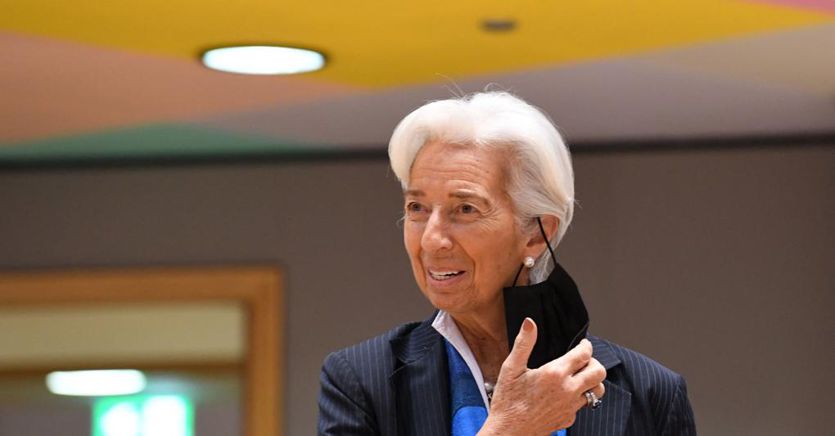Too much uncertainty. There are many analysts who underline the difficulties of predicting – for the European Central Bank – the future trend of the eurozone economy. With an evident consequence on the level of monetary policy, which cannot ignore the prolongation of inflation but cannot simply move towards tightening. In January, moreover, the effects of the transitional reduction of the German VAT in 2020 will vanish, while other technical factors and the same difficulties in the flow of supplies will begin to run out: the prospects will become clearer.
The role of projections
Much will depend on the new projections. The ECB has made it very clear that for the stance of monetary policy to change, forecast inflation will need to steadily return to 2% well before the end of the forecast horizon, which will now push through to 2024. At the moment few expect that inflation, expected in September at 1.5% in 2023 (after 1.7% in 2022) will really change course to the point of imposing a different orientation.
GDP still below 2019 levels
Unlike what happens in the United States, there is no strong increase in demand in Euroland: the NextGeneration Eu is ambitious, especially if added to the interventions of the individual states, but it does not reach the size of the various American maxi floors; the GDP of Euroland has not yet reached the pre-crisis levels; and not all sectors suffer a sharp rise in prices, even if the number of overheated sectors increases and real wages, in any case, suffer.
Declining yield curve
It is precisely this aspect – together with uncertainty – that calls for a certain prudence which, however, cannot forget some important elements. The yield curve, which represents the “floor” under which loan rates cannot fall, is falling, contrary to what the rise in prices would suggest; while the effective exchange rate of the euro continues to decline, albeit moderately. The cost of credit is not affected by this situation, it remains substantially stable and even tends to converge towards a single level (a sign of greater integration between countries), but it is clear that the situation makes total inaction a bit risky.
A little race towards safe stocks
It is therefore conceivable that the ECB, without altering its strategy, sends the signal that it is ready to act. Markets are still aiming for an end to pandemic bond purchases in March, accompanied by greater flexibility in the App program, the “old” quantitative easing. In recent weeks, the spread between the weighted yields (at GDP) of all Euroland bonds, compared to those of AAA bonds only, has started to grow again, a signal that – albeit limited to ten years – awakens ancient fears and deep-rooted problems ( including that of the Italian debt). Caution should then dominate the whole action and communication of the European Central Bank, looking for a really difficult balance.
